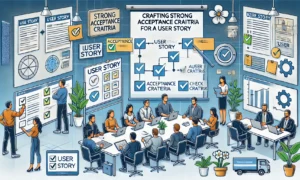As the landscape of product management continues to evolve, artificial intelligence (AI) and automation are taking center stage. The ability to leverage AI tools to streamline tasks, gather insights, and make data-driven decisions is revolutionizing how product managers (PMs) approach their roles. In this article, we’ll explore how AI is reshaping product management, making it more efficient, customer-centric, and innovative.
1. AI-Powered Data Analytics and Insights
One of the primary ways AI is transforming product management is through the automation of data analysis. Product managers often deal with vast amounts of customer feedback, usage metrics, and market data. AI can help by automatically processing and interpreting this data to uncover trends, pain points, and opportunities.
Real-life Example: Spotify uses AI-driven data analytics to understand user preferences and behavior patterns. By analyzing millions of data points, Spotify can suggest personalized music to users, enhance user engagement, and shape future product updates based on data insights. Product managers can use similar AI tools to identify actionable insights without manually sifting through data.
2. Predictive Analytics for Better Decision-Making
AI’s ability to analyze historical data and predict future trends is invaluable for product managers. With predictive analytics, PMs can forecast user behavior, identify market opportunities, and even predict product performance.
Real-life Example: Netflix relies heavily on predictive algorithms to forecast what content will resonate with viewers. This data informs not only their content production but also the overall product experience. For product managers, predictive analytics can guide decisions on feature development, customer retention strategies, and market positioning.
3. Customer Personalization at Scale
Personalizing the product experience for each user is a powerful way to increase engagement and loyalty. AI allows PMs to automate personalization at scale, delivering tailored experiences based on user data.
Real-life Example: Amazon has set the bar for personalization with its AI-driven recommendation engine. By analyzing past purchases, browsing behavior, and user preferences, Amazon’s system continuously refines product recommendations, driving more sales. Product managers can apply similar AI tools to create customized user journeys that enhance user satisfaction and retention.
4. Automation of Routine PM Tasks
AI can take over many routine tasks that once consumed a significant portion of a PM’s time. From scheduling meetings to creating reports, AI tools can automate administrative tasks, allowing PMs to focus on more strategic activities.
Real-life Example: Trello integrates AI tools that automate project management tasks such as task assignment and deadline tracking. This allows PMs to spend less time on logistics and more time on high-value work like product strategy and customer engagement.
5. AI in User Testing and Feedback Loops
User testing and gathering feedback are essential to product development. AI tools can automate the analysis of feedback and testing results, identifying key insights that can inform product iterations. Machine learning models can analyze sentiment from customer reviews or surveys and identify patterns that would be difficult for humans to detect manually.
Real-life Example: Airbnb utilizes AI-driven sentiment analysis to process guest and host feedback. This allows the company to quickly identify issues and opportunities for product improvements. Product managers can use AI to manage continuous feedback loops more efficiently and prioritize changes that will have the greatest impact.
6. Enhanced Collaboration and Communication
AI can also enhance communication and collaboration among product teams. Tools like AI-driven chatbots or project management platforms help streamline collaboration between cross-functional teams, making sure everyone stays on the same page.
Real-life Example: Slack uses AI to automate workflow management within teams. Slack’s AI features, like reminders, smart replies, and data-driven channel recommendations, keep teams connected and ensure information flows smoothly. For product managers, these tools simplify communication and ensure that the team is focused on product development goals.
7. AI-Driven Product Roadmapping
Product roadmaps are a critical component of product management. AI can help automate aspects of roadmapping by analyzing data to prioritize features, manage timelines, and assess product performance. With AI, PMs can create roadmaps that are dynamic and easily updated based on real-time data, user feedback, and business goals.
Real-life Example: Atlassian’s Jira leverages AI to offer predictive roadmapping capabilities. It analyzes historical project data to provide estimates on timelines and feature priorities, helping PMs make more informed decisions about where to allocate resources.
8. Improving Customer Support with AI
AI can also enhance customer support efforts by automating responses to frequently asked questions or resolving common issues through chatbots. This frees up product teams to focus on complex problems and improving product features, rather than dealing with routine support inquiries.
Real-life Example: Zendesk uses AI-powered chatbots to provide instant support to customers. By automating common support queries, they improve response times and ensure customers get the help they need. For product managers, integrating AI into customer support is an effective way to improve the user experience and ensure customer satisfaction.
Conclusion: AI Is the Future of Product Management
AI is no longer just a buzzword—it’s an integral part of product management that’s driving greater efficiency, personalization, and data-driven decision-making. As AI continues to evolve, product managers will have even more powerful tools at their disposal to create innovative products, deliver exceptional customer experiences, and stay ahead of the competition. By embracing automation and AI-driven insights, product managers can optimize their workflows and deliver products that truly meet the needs of their customers.



